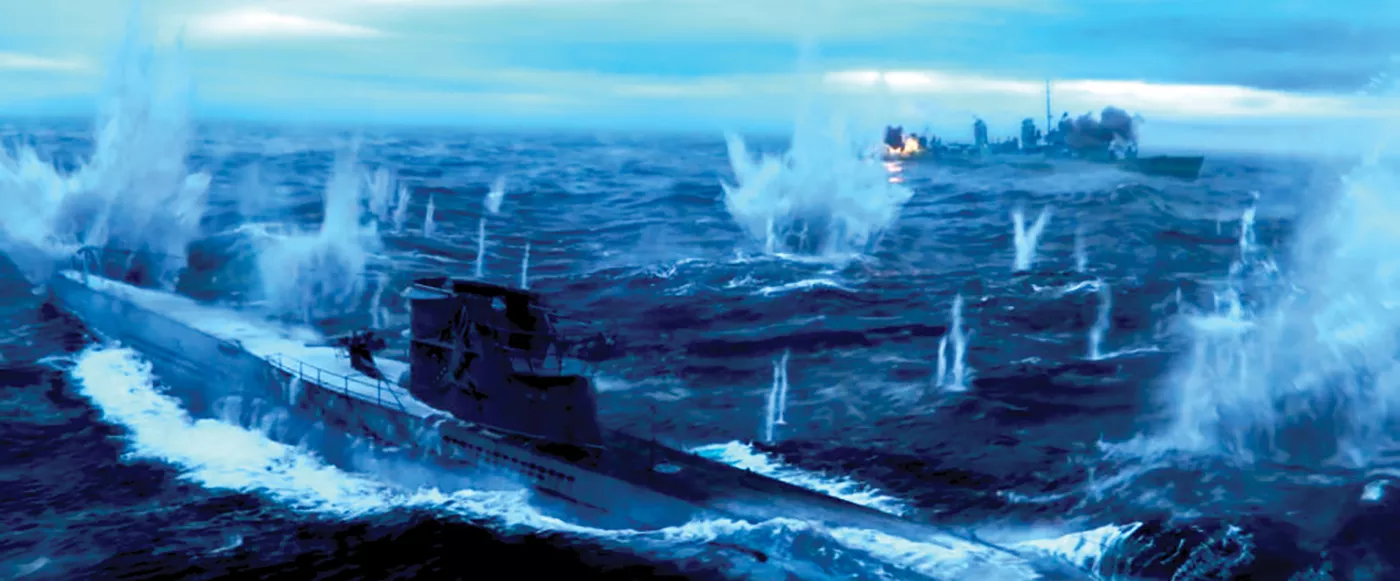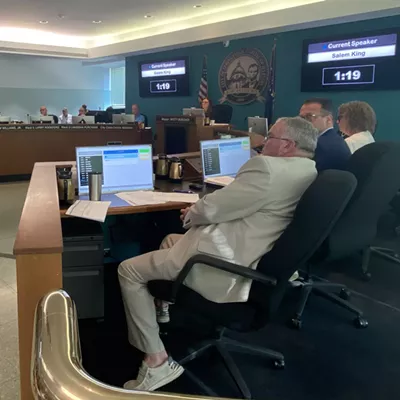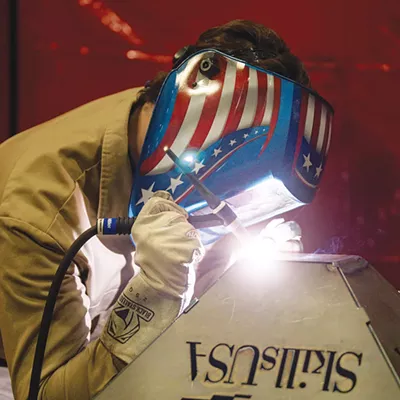Springfield native Aaron Schneider directs Tom Hanks’ latest film
By Chuck KoplinskiIt’s a long way from Chatham Road to Hollywood, California, but it’s a journey Springfield native Aaron Schneider has made over the course of his 54 years. The filmmaker, who cut his teeth as a cinematographer on videos for Eminem and Cyprus Hill, as well as the films Kiss the Girls (1997) and Simon Birch (1998), made his directorial debut with Get Low (2009), a compelling piece of southern gothic starring Robert Duvall, Bill Murray and Sissy Spacek that was met with widespread critical acclaim and was a favorite on the film festival circuit both here and abroad.
Schneider’s latest film is Greyhound, a World War II adventure starring Tom Hanks, based on a novel by C.S. Forster. It tells the story of Captain Ernest Krause, a naval officer who is charged with leading a convoy of 37 Allied ships across the North Atlantic to deliver vital supplies for the European war effort. While the weather itself makes the crossing hazardous, of greater concern is the pack of German U-boats that’s following them, intent on sinking as many ships in Krause’s charge as possible.
Though the film only covers a period of three days and has a running time of 90 minutes, the production has an epic feel to it, what with the number of ships and pyrotechnics involved as well as the many battle scenes that take place on the high seas. It also sports a relatively modest budget – just north of $50 million – for a movie of this sort. To bring a story of this size to the screen for a relative pittance when compared to today’s superhero extravaganzas presented its own set of unique challenges, yet when this project came his way, Schneider knew it was one he couldn’t pass up.
“Obviously, when a Tom Hanks World War II movie is put in front of you to read, you get excited,” the director told me when I spoke to him on the phone recently. “Right away, what struck me as unusual was that Tom had written it. Artists like him have done so much and have been so successful, you forget that there are times when they are trying to challenge themselves, to push themselves in different directions. I felt as though he was trying to create his own experience working as a writer and producer. It was something he had never done before and I really wanted to be a part of it.”
Hanks had already approached other filmmakers, but their take on it was too grand for what the actor envisioned. “Tom said that what he had in mind was a perfect 90-minute movie and that’s what we set out to do,” said Schneider.
The director said he wanted to humanize the experience of battle for everyone on the ship by putting the viewer in Krause’s shoes.
“I wanted to place the camera over Krause’s shoulder and have the audience follow this man through his experiences,” Schneider recounted. “I wanted to make sure you knew what it was like to be him – what did he see, what didn’t he see. The details and how he reacts to it all are how we get to know the man. His character comes out through everything that is thrown at him.”
The fact that today’s cameras are so small and portable makes this approach easy to accomplish. However, marrying images of real objects and settings to those generated by computers to create the scope necessary to capture these epic events is much more difficult. While modern technology allows filmmakers to produce these images, combining them in a way that makes them seem genuine is the real challenge.
According to Schneider, while the sky is the limit when it comes to special effects, it can also cause the director to stray away from the language of the film itself.
“In Spider-Man, when Spidey swings through New York, you see everything from his point of view. There’s no way a camera can be strapped to his shoulder and the viewer knows that’s not possible. They decide to be stylistic, and underneath it all, you know it must be fake. So, you throw out what special effects can do and limit yourself to what you can do within the scope of your story,” he said.
“A war film needs to be grounded in reality,” Schneider continued. “The goal was to make sure the effects had the same sense of verisimilitude, that the ones we created on the computer matched with the footage we had already shot. The trick to that is making sure that any shot you’re working on is grounded in real photography. You want to start with as many real elements as you can in the frame. The real element in the frame provides context to the artist who fills in the rest of the frame with computer-generated images. It becomes obvious when things don’t match up.”
Much of the reality came from extensive footage shot on the USS Kidd, a decommissioned naval vessel in Baton Rouge, Louisiana. In addition to shooting scenes on location for nearly a month, Schneider took more than 10,000 pictures of the ship to use for future reference when the computer- generated images were produced.
The program Schneider and his crew relied on was NVIDIA WaveWorks, a system designed specifically to recreate how the ocean moves and how ships and objects appear while at sea. “It creates an open ocean and floats an object on the ocean based on the physical mass,” Schneider said. “So, if I type in the model type of a boat, it will float that object the way it would be on the ocean.” And while this program makes it much easier and cheaper than amassing and choreographing a mini-armada on the sea, using these pixeled constructs presents its own set of unique challenges. “The hardest shots are the ones where you start from scratch,” recounted Schneider. “If there’s no real water, no real ship and you use animated men, you run the risk of those scenes standing out like a sore thumb. In the shot, you have no touchstone of reality to compare to. For example, when you work on a shot of the ship moving through each wave, you have to refer to photographs to see how the light falls on the metal and what sort of shadows it creates and so many other factors. And while you can make everything perfect, we wanted to capture the imperfections of the ocean.”
The CGI program Schneider and his crew used is so advanced that not only were the ships and the battles created on a computer screen but all of the water and ice you see as well. Not a single drop of real water is present in the final film.
“The craft of visual effects is breaking down reality. It’s about light and texture and camera movement. If you do the job right, no one notices the effects,” said Schneider. To achieve this level of visual seamlessness takes time, something that Schneider, luckily, had plenty of.
“Inevitably, all filmmakers have to move between the three prongs of production. You can make your film good, fast or cheap, and when you’re faced with this, you shoot for two out of three. Luckily, we were able to make it good and cheap.”
Beginning pre-production in late 2017, principal photography was finished in early 2018. And while there was plenty of time set aside to perfect the effects, more time became available through an unexpected series of events.
“The film was first slotted to come out after Hanks’ A Beautiful Day in the Neighborhood, to be released on the anniversary of V-E Day. Then COVID came along and we got a bit more time,” noted Schneider.
Not only did Schneider and his crew get more time, but the film itself was shifted from being a theatrical release to debuting on Apple TV. This change in delivery platforms required its own kind of technical tweaks. “We had shot the film with the intent of having it seen on the big screen. However, we had to adjust the color timing on it before Apple streamed it. The coloring wouldn’t have been as sharp, so we made certain changes to make sure the image was as clear as possible. Still, I’m hoping one day to see it on the big screen, hopefully with as many of the crew members as possible so we can celebrate what we accomplished,” he said.
Chuck Koplinski is a film critic who lives in Champaign.


















